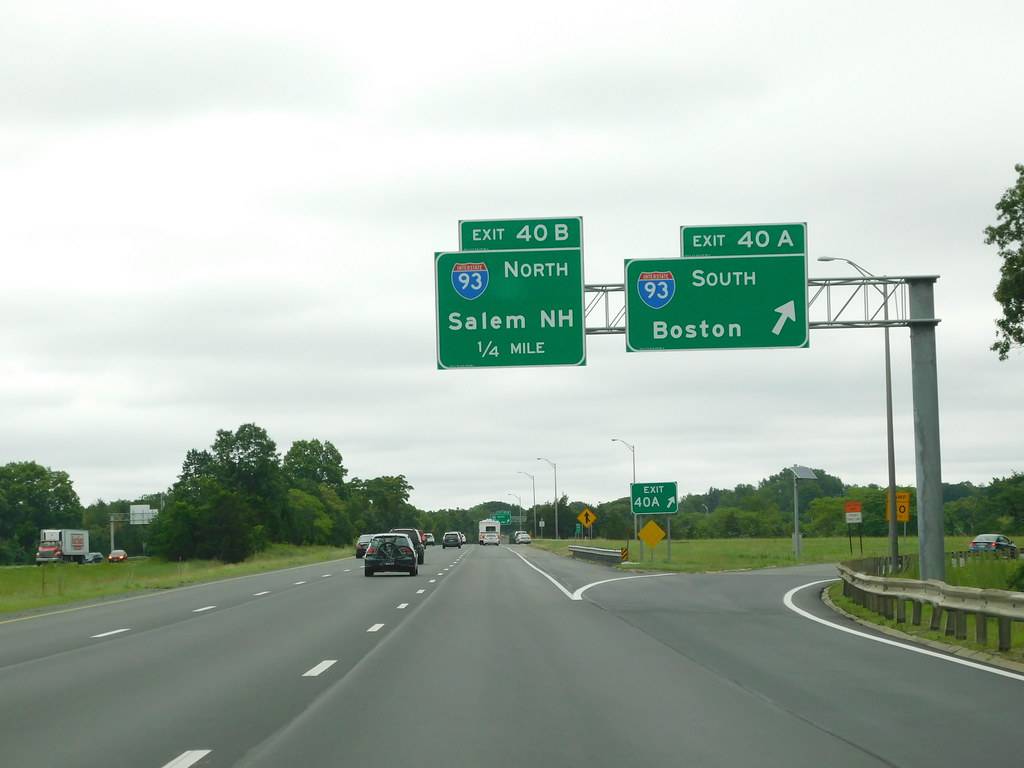The following letter to the editor was submitted by Andover resident Jesse Jacobson, who holds a PhD in transportation systems from MIT. The views expressed are solely those of the author and do not necessarily reflect the views of Andover News. You can learn more about our policy on opinion and commentary on our Mission and Policies page.
Should the road network of Andover be used daily as a spill-over for the interstates I-93 and I-495? Andover is at the junction of those two major roadways, each a 6-lane monster, carrying an equally monstrous volume of vehicles. This means not only convenient regional access for Andover residents, but also significant daily in-town traffic hazards when the maximum capacity of the interstates is attained and traffic spills over onto the Andover residential roadways. The interstates are like rivers overflowing banks banks, but, instead of occasionally, these floods occur daily.
On the one hand, the interstates protect vehicles and occupants with sturdy guardrails, separation of traffic directions, emergency lanes, wide driving lanes and exclude all vulnerable users (e.g., pedestrians and bicyclists). On the other hand, the Andover roadways have none of those protective features, and vulnerable users share the much-narrower Andover roadways. Does anybody see a combustible brew?
Let’s focus on two examples, i.e., two roadways that epitomize the struggles of Andover residents. First and foremost is Lovejoy Road. Lovejoy, a 1.4mile roadway, lies one-third-of-a-mile West of I-93, between two of the exits on the interstate, and is parallel to that interstate. When I-93 becomes congested, spill-over traffic quickly overwhelms Lovejoy. This should not be allowed to happen. Rather, Lovejoy should be treated as a frontage road, a densely-settled and residential local street that should be restricted to serving its residents, with a playground, and an elementary school. Yet the Federal and Commonwealth functional classification of Lovejoy is mistakenly established as “arterial.” “Arterials”, however, link urban centers (as per the definition of “arterial”), and this is not at all the function of Lovejoy. An “arterial” classification is a death sentence for residential areas, and prevents the residents from enjoying their neighborhood.
The second of our two examples is the planned MassDOT reconstruction of Route 133 between West Parish and the Shawsheen Village Historical District. As in the case of Lovejoy, Route 133, a two-lane highway, runs parallel to an interstate, in this case I-495, and it is in a similarly dense residential area in the reconstruction zone. Both these examples exhibit a similar topology and similar daily spill-overs. Awkwardly, rather than proposing a mitigation of the spill-overs, the $17 million reconstruction of Route 133 intends to increase the already high volume of vehicles, vehicles that would be better served by the interstate.
In conclusion, I encourage you to share with the Andover Select Board your opinion on the matters discussed here.
Jesse Jacobson
Andover
About the author: Even before graduating with a civil engineering degree, the author participated in a major forensic study of 10 fatal freeway crashes. After earning a PhD in Transportation Systems from MIT, he worked for a few years at a research unit of the US Department of Transportation. He was also briefly the subject-matter expert at USDOT for Right-Turn-on-Red. He works closely with George Thorlin, the founder of Andover Safe Streets.
Andover News accepts and encourages reader submissions, including letters to the editor and opinion columns. Submissions should be 750 words long or fewer and Andover-focused. Please include your name, title if applicable to your topic and connection or interest in Andover. We also need a phone number so we can confirm authorship. Send us your prose!

